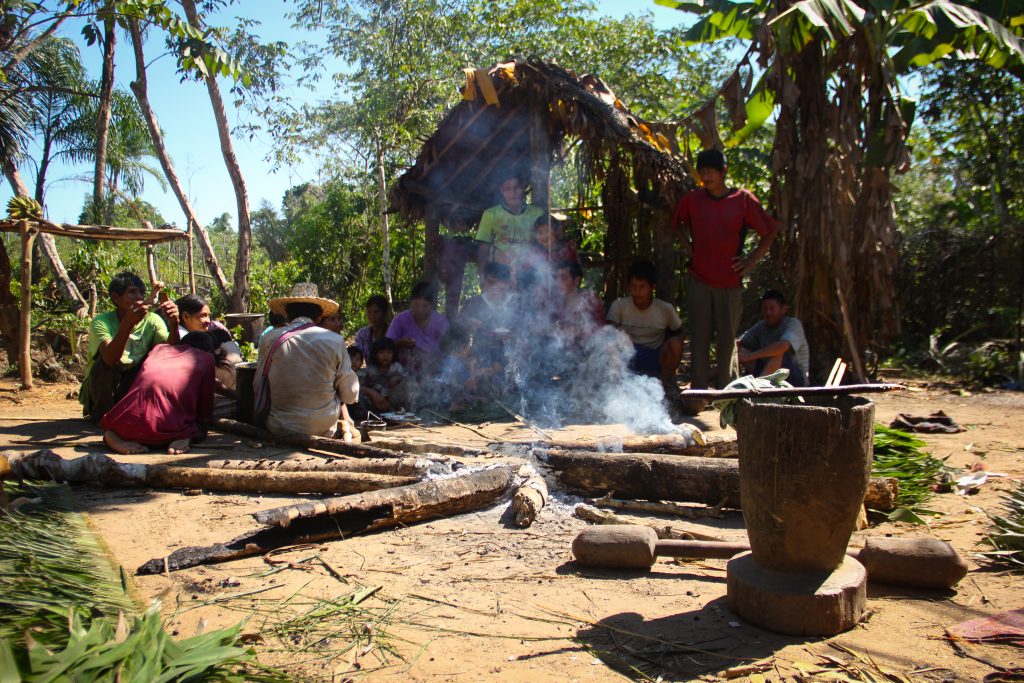Notes from the field: Tracking LICCIs in the Territorio Indígena Tsimane’
This past October, André, Petra, and Viki from the LICCI core team went on a field trip to the Territorio Indígena Tsimane’ (Dept. Beni, Bolivia).

Tomas Huanca, Esther Conde, Isidoro Canchi and Elias Isa, members of our partner organization “Centro Boliviano de Desarrollo Socio Integral” (CBIDSI) also came along. Together, they worked in identifying changes perceived by the Timane’ in their territory. This was a particularly emotive trip as Viki, Tomas, and Esther have worked in the area for two decades and have also been witnesses of some of the changes mentioned by the Tsimane’.
The Tsimane’ were a society of hunter-gatherers who lived isolated from the market economy and the national society until recently. The opening of roads in the area in the 1970’s, and the consequent arrival of missionaries, traders, colonists farmers, cattle ranchers, and loggers changed Tsimane’ life styles in profound ways. The elaboration of a time line of important events in the area highlighted how the Tsimane’ ’ themselves perceived these processes. It was also useful to explore how these external pressures continue to threaten their territory nowadays, as the Tsimane’ reported the recent effects of new colonization waves and the opening of new logging roads.
In their conversations with the Tsimane’, they learned that they also perceive many changes in the climatic system with cascade effects on the biophysical and socioeconomic systems. For example, the Tsimane’ report an increase in temperature and a decrease in the amount of rainfall. According to them, these affect the amount of water in the river and the stream, as well as water temperature. Together this increases fish mortality. Hotter temperatures and decreased rains also affect the ripening of some cultural keystone species for the Tsimane’, such as the Väij (Bactris gasipaes) –which indicated the end of the rainy season and the start of the Tsimane’ seasonal calendar-, and the O’ba (Ceiba pentandra)– whose flowering indicated the best time for hunting-.
Through their interviews, they also noticed that the Tsimane’ have their own understanding of the complex relations and multiple drivers of change. For example, when asked to clarify causes of decrease in fish abundance in a focus group discussion, participants mentioned that there were many drivers for this change, including the adoption of new technologies (fishing nets), the increase in fish commercialization, together with the decrease in river water, the increase in river water temperature, and the lack of respect to cultural norms.
Despite 20 years of work with the Tsimane’, there is still a lot to learn from them, and they are excited to keep on collaborating with the Tsimane’ and CBIDSI during the LICCI project.
“Me alegro mucho de haber participado en este estudio. Yo ya no se muchas cosas de mi propia cultura, y trabajando en este estudio he aprendido mucho. Me alegro de haber participado” (Isidoro Canchi, Indigenous researcher at CBIDSI).
“Estoy muy contento de este viaje. Yo no había visitado estas comunidades nunca antes; es mi primer viaje rio arriba. He aprendido cosas que no conocía antes. Los comunarios nos han dicho que hay muchos cambios, sobretodo por sequía. Como yo también soy del campo, me ha interesado aprender esto. Estoy muy contento de haber ido a este viaje” (Elias Isa, Indigenous researcher at CBIDSI).